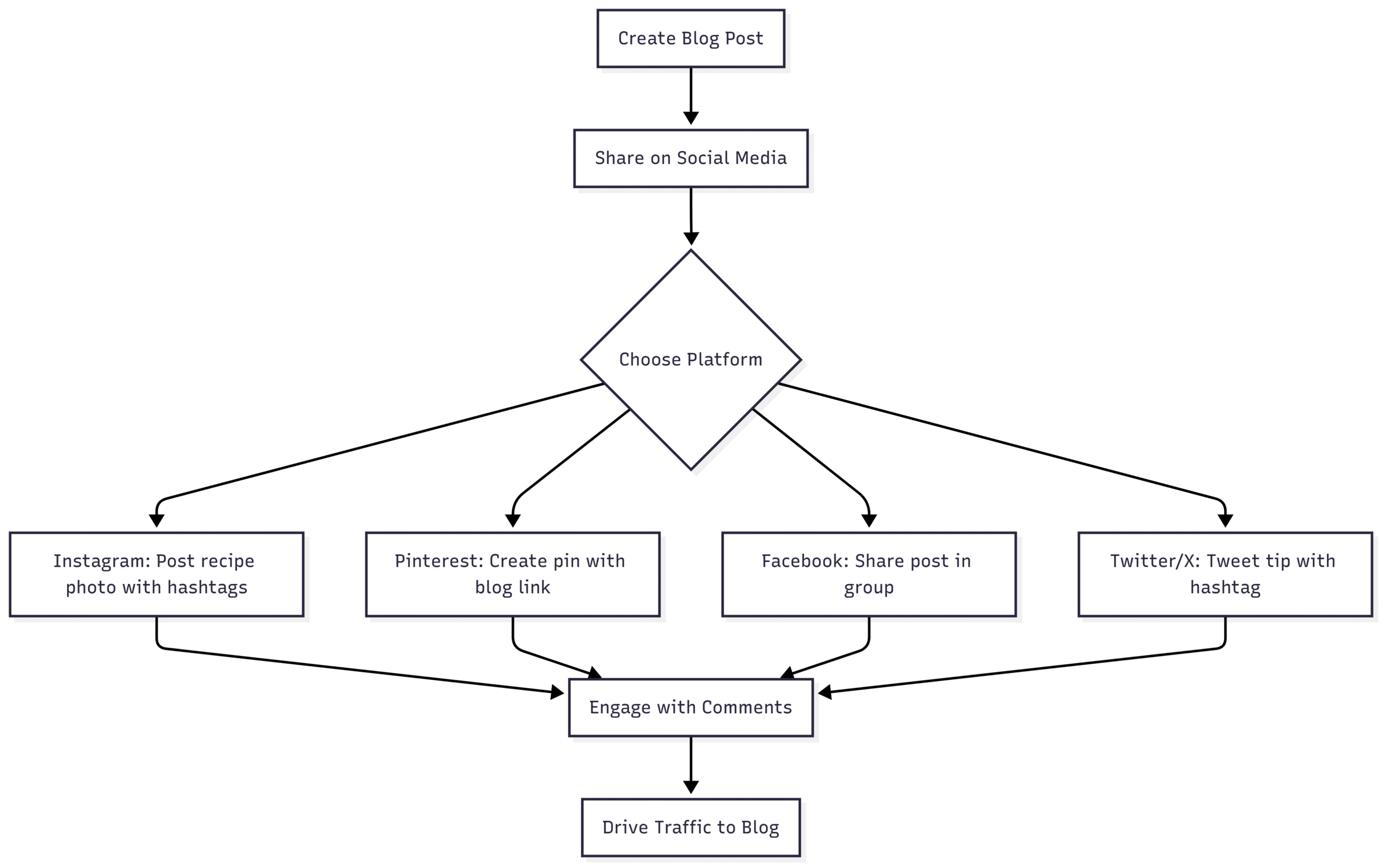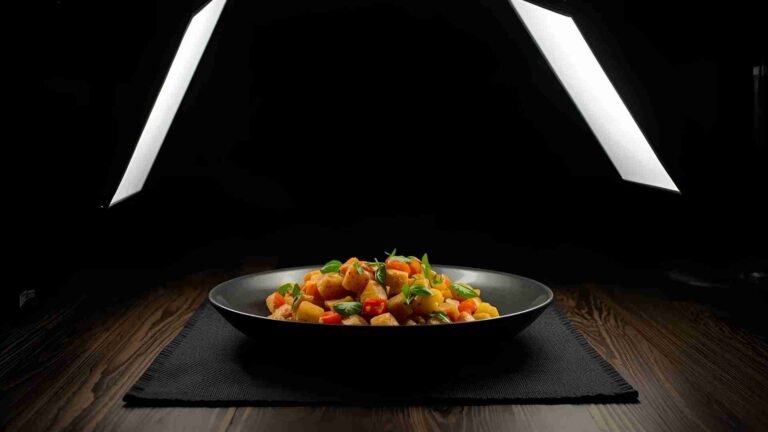How To Create a Weight Loss Blog [9 Steps to Success!]
Learn how to create a successful weight loss blog with our 9-step guide. From niche selection to monetization, build your blog today!
Creating a weight loss blog is a rewarding way to share your health journey, inspire others, and potentially generate income. Whether you’re passionate about fitness, nutrition, or mindful eating, a blog allows you to connect with a like-minded audience while building a platform that reflects your unique perspective. This comprehensive guide outlines nine actionable steps to launch and grow a successful weight loss blog, optimized for search engines and designed to engage readers. From finding your niche to monetizing your content, we’ll cover everything you need to know to create a thriving online presence.
Step 1: Find Your Weight Loss Niche
The foundation of a successful weight loss blog is a well-defined niche. A niche is the specific focus of your blog, allowing you to target a particular audience and stand out in the crowded health and wellness space. Choosing a niche aligns your content with your passion and expertise while meeting the needs of your readers.
Why a Niche Matters
A focused niche helps you:
- Attract a dedicated audience interested in your specific topic.
- Establish authority by providing specialized content.
- Improve search engine rankings by targeting specific keywords.
Popular Weight Loss Niches
Consider these niche ideas based on your interests and market demand:
- Healthy Recipes: Share nutritious, weight-loss-friendly meals, such as low-carb or plant-based recipes.
- Fitness for Specific Groups: Focus on workouts for busy parents, seniors, or beginners.
- Mindful Eating: Offer tips on intuitive eating or overcoming emotional eating.
- Specific Diets: Cover popular diets like keto, paleo, or intermittent fasting.
- Motivational Stories: Share personal weight loss journeys or success stories from others.
How to Choose Your Niche
- Reflect on Your Passion: What aspect of weight loss excites you? Are you a recipe creator, a fitness enthusiast, or a motivational coach?
- Research Market Demand: Use tools like Semrush, Ahrefs, or Google Trends to identify trending topics. For example, searches for “keto recipes” or “home workouts for weight loss” may reveal high-demand niches.
- Evaluate Competition: Analyze other weight loss blogs to find gaps you can fill. For instance, if most blogs focus on high-intensity workouts, consider low-impact exercises for beginners.
Example Niche Analysis
| Niche | Search Volume (Monthly) | Competition Level | Opportunity |
|---|---|---|---|
| Keto Recipes | 500,000 | High | High demand, recipe-focused |
| Workouts for Seniors | 50,000 | Medium | Growing demographic, less competition |
| Mindful Eating Tips | 30,000 | Low | Niche audience, high engagement |
By aligning your passion with market demand, you can create a blog that resonates with readers and ranks well on search engines.
Step 2: Choose a Blogging Platform
Your blogging platform is the backbone of your website, enabling you to publish content, customize your design, and optimize for search engines. Selecting the right platform depends on your technical skills, budget, and long-term goals.
Popular Blogging Platforms
Here’s a comparison of three popular platforms:
| Platform | Pros | Cons | Best For |
|---|---|---|---|
| WordPress.org | Highly customizable, SEO-friendly, plugin support | Requires hosting and domain | Serious bloggers aiming for growth |
| WordPress.com | Easy to set up, no hosting needed | Limited customization | Beginners with minimal budget |
| Squarespace | User-friendly, sleek designs | Less flexible, higher cost | Design-focused bloggers |
Why Choose WordPress.org?
WordPress.org is the top choice for weight loss bloggers due to its:
- Flexibility: Thousands of themes and plugins, like Tasty Recipes for recipe cards or Yoast SEO for optimization.
- SEO Capabilities: Easy integration with SEO tools to boost search rankings.
- Scalability: Supports growth from a small blog to a large website.
- Community Support: Extensive tutorials and forums for troubleshooting.
Getting Started with WordPress.org
Most hosting providers offer one-click WordPress installation, making setup straightforward. If your host doesn’t provide this, follow WordPress.org’s manual installation guide or use online tutorials for assistance.
Step 3: Create Your Domain Name
Your domain name is your blog’s online address, serving as its identity. A memorable, relevant domain name enhances brand recognition and helps with SEO.
Tips for Choosing a Domain Name
- Keep It Short and Simple: Aim for 6-15 characters (e.g., FitJourney.com).
- Reflect Your Niche: Include keywords like “weight loss,” “fit,” or “healthy” (e.g., HealthyBites.com).
- Avoid Numbers and Hyphens: These can confuse users (e.g., use FitLife.com instead of Fit-Life-123.com).
- Check Availability: Use tools like DomainWheel or GoDaddy to find available domains.
Cost Considerations
- Domain Registration: Typically $10-$20 per year.
- Bundling with Hosting: Many hosting providers, like Bluehost or SiteGround, offer free domain registration for the first year with a hosting plan.
Step 4: Pick Your Web Hosting Service
A reliable web host ensures your blog is accessible, fast, and secure. Think of hosting as the foundation of your blog’s online presence.
Key Hosting Features
When choosing a host, prioritize:
- Uptime: Aim for 99.9% uptime to ensure your blog is always accessible.
- Speed: Fast loading times improve user experience and SEO.
- Security: Look for SSL certificates and malware protection.
- Scalability: Choose a host that can handle traffic growth.
- Customer Support: 24/7 support via chat, email, or phone is essential.
Recommended Hosting Providers
| Provider | Starting Price (Monthly) | Uptime Guarantee | Key Features |
|---|---|---|---|
| BigScoots | $6.95 | 99.99% | Fast, reliable, excellent support |
| SiteGround | $3.99 | 99.9% | User-friendly, strong security |
| Bluehost | $2.95 | 99.9% | Free domain, WordPress integration |
BigScoots is a standout choice for its speed, reliability, and customer support, making it ideal for weight loss bloggers aiming for a professional setup.
Step 5: Design Your Blog
Your blog’s design sets the tone for your brand and influences user experience. A clean, intuitive design keeps readers engaged and encourages them to explore your content.
Choosing a Theme
Select a WordPress theme that aligns with your niche and is mobile-responsive. Popular options include:
- Astra: Lightweight, customizable, and SEO-friendly.
- Divi: Offers drag-and-drop design for beginners.
- Foodie Pro: Ideal for recipe-focused weight loss blogs.
Essential Pages
Include these pages to make your blog functional and user-friendly:
- Home Page: Welcomes visitors with a clear overview of your blog’s purpose.
- About Me: Shares your story and builds trust with readers.
- Blog Section: Hosts your articles and content.
- Contact Page: Includes a form or email for reader inquiries.
- Disclaimer: Clarifies health-related content is not medical advice.
Design Tips
- Use a Consistent Color Scheme: Reflect your brand (e.g., green for health-focused blogs).
- Incorporate Social Media Links: Add icons for Instagram, Pinterest, etc.
- Optimize for Mobile: Ensure your theme is responsive for smartphone users.
Step 6: Create Engaging Content
Content is the heart of your weight loss blog. High-quality, valuable content keeps readers coming back and boosts your search engine rankings.
Types of Content
Diversify your posts to appeal to your audience:
- Informative Articles: Cover topics like “Top 10 Low-Carb Snacks” or “Benefits of Intermittent Fasting.”
- Recipes: Share healthy, weight-loss-friendly recipes with clear instructions.
- Workout Plans: Provide beginner-friendly exercise routines.
- Personal Stories: Share your weight loss journey to inspire readers.
- Tips and Guides: Offer practical advice, like “How to Stay Motivated on a Diet.”
Using Tasty Recipes for Food Bloggers
For recipe-focused blogs, the Tasty Recipes plugin for WordPress simplifies creating professional recipe cards. Features include:
- Nutritional information display.
- Printable recipe formats.
- SEO-optimized recipe schema.
Example Recipe Card (Couscous Summer Salad):
- Ingredients: Couscous, cherry tomatoes, cucumber, feta, olive oil.
- Instructions: Cook couscous, mix with chopped veggies, drizzle with oil, and serve chilled.
- Prep Time: 15 minutes | Servings: 4 | Calories: 200 kcal per serving.
SEO Best Practices
To make your content discoverable:
- Use Keywords: Include phrases like “weight loss recipes” or “healthy eating tips” naturally in titles, headings, and text.
- Write Meta Descriptions: Keep them under 160 characters and include primary keywords.
- Optimize Images: Use descriptive file names (e.g., “keto-salad-recipe.jpg”) and alt text.
- Internal Linking: Link to other blog posts to keep readers on your site.
Step 7: Monetize Your Blog
Monetizing your weight loss blog can turn your passion into a profitable venture. Here are the most effective strategies:
Affiliate Marketing
Promote products you trust and earn commissions on sales. Popular affiliate programs for weight loss blogs include:
- Amazon Associates: Promote kitchen gadgets, fitness equipment, or books.
- ClickBank: Offers health and wellness products with high commissions.
- Fitness Apps: Partner with apps like MyFitnessPal or Fitbit.
How It Works:
- Join an affiliate program.
- Share unique affiliate links in blog posts or social media.
- Earn a commission (typically 5-20%) when readers purchase through your links.
Sponsored Content
Collaborate with brands to create paid content. Examples:
- Write a post about a fitness tracker, highlighting its benefits.
- Partner with a meal prep service to showcase their offerings.
Tips:
- Work with brands aligned with your niche.
- Disclose sponsored content to maintain transparency.
Digital Products
Create and sell products like:
- E-books: “30-Day Weight Loss Meal Plan” or “Beginner’s Guide to Keto.”
- Workout Plans: Downloadable PDFs with exercise routines.
- Trackers: Printable weight loss or habit trackers.
Pricing Example:
- E-book: $10-$30
- Workout Plan: $15-$50
- Tracker Templates: $5-$15
Coaching Services
Offer personalized services, such as:
- One-on-one weight loss coaching.
- Nutrition consultations.
- Group fitness classes.
Pricing Example:
- Coaching Session: $50-$150 per hour.
- Monthly Program: $200-$500.
Membership Programs
Create a subscription-based area with exclusive content, such as:
- Premium recipes or workout videos.
- Community forums for support.
- Live Q&A sessions.
Pricing Example:
- Monthly Membership: $10-$30.
Step 8: Spread Your Message
Promoting your blog is essential to grow your audience and increase traffic.
Social Media Strategies
Each platform offers unique opportunities:
- Instagram: Share visually appealing recipe photos, workout videos, or before-and-after transformations. Use hashtags like #WeightLossJourney or #HealthyRecipes.
- Pinterest: Create pins for recipes and workout plans, linking back to your blog.
- Facebook: Build a community with groups or pages, sharing longer posts and engaging with followers.
- Twitter/X: Post quick tips, motivational quotes, or blog links using relevant hashtags.
Chart: Social Media Strategy Workflow

Other Promotion Tactics
- Email Marketing: Build an email list and send newsletters with blog updates or exclusive content.
- Guest Posting: Write for other health and wellness blogs to reach new audiences.
- Collaborations: Partner with influencers or bloggers in your niche.
Step 9: Be Consistent
Consistency is key to building a loyal audience and maintaining momentum.
Posting Schedule
- Frequency: Aim for 1-2 posts per week to start.
- Content Calendar: Plan posts in advance to cover recipes, workouts, and tips.
- Tools: Use Trello or Google Calendar to organize your schedule.
Engaging with Readers
- Respond to comments and emails promptly.
- Share reader success stories to foster community.
- Ask for feedback through polls or social media.
Tracking Performance
Use analytics tools to monitor your blog’s success:
- Google Analytics: Tracks traffic, user behavior, and popular posts.
- Semrush: Monitors keyword rankings and competitor performance.
Staying Adaptable
- Follow Trends: Stay updated on weight loss research and diets.
- Adjust Strategies: Experiment with new content types based on audience feedback.
Conclusion
Creating a weight loss blog is a journey of sharing knowledge, inspiring others, and building a community around health and wellness. By following these nine steps—finding your niche, choosing a platform, designing your blog, creating engaging content, monetizing, and promoting consistently—you can establish a successful blog that resonates with readers and generates income. Tools like Tasty Recipes can elevate your content, while SEO and social media strategies amplify your reach. Start today, stay authentic, and watch your blog become a go-to resource for weight loss inspiration.
Please share these How To Create a Weight Loss Blog [9 Steps to Success!] with your friends and do a comment below about your feedback.
We will meet you on next article.
Until you can read, How to Create the Ultimate Digital Cookbook
![How To Create a Weight Loss Blog [9 Steps to Success!]](https://yumtonight.com/wp-content/uploads/2025/07/Untitled-design-2-4.jpg)





